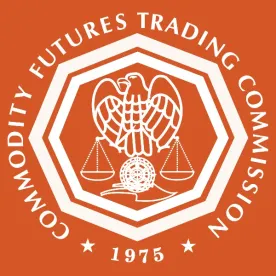A common tool that the Commodity Futures Trading Commission (CFTC) relies upon to conduct market surveillance, including monitoring compliance with position limits, will soon enter the digital age – the Form 40 and Form 40S. The CFTC’s Division of Market Oversight (DMO) will issue the new Form 40/40S pursuant to Special Calls to market participants that hold a reportable position in certain CFTC-regulated futures and swaps markets. At a high-level, the Form 40/40S requests information about the ownership and control structure of the reportable trader.
The old Form 40, which has been in place for decades, is a PDF file that market participants submit via email in response to a Special Call. The old Form 40S is essentially the same as the old Form 40, but the old Form 40 requests information about futures trading whereas the old Form 40S requests the same information about trading in certain physical commodity swaps (the old Form 40/40S collectively, the “Legacy Form 40/40S”). On November 18, 2016, the CFTC will cease issuing Special Calls via the Legacy Form 40/40S and begin issuing Special Calls using a new, electronic filing, submitted directly to a CFTC database (the “New Form 40/40S”). The New Form 40/40S requests significantly more data about the reportable trader than the Legacy Form 40/40S. Furthermore, unlike the Legacy Form 40/40S, the New Form 40/40S includes an affirmative obligation to update the reported information if and when it changes.
The upcoming change to the Form 40/40S stems from a November 18, 2013 rulemaking in which the CFTC significantly revamped the ownership and control reports (“OCR”) that it receives from intermediaries (e.g., futures commission merchants (“FCM”), foreign brokers, and swap dealers) about their customers/counterparties along with the Form 40/40S that the CFTC receives directly from market participants.1 Prior to the 2013 rule amendments, FCMs and foreign brokers filed a PDF Form 102 with the CFTC for each customer with a reportable futures position, while swap dealers and clearing members filed a similar Form 102S for customers/counterparties with a reportable position in certain physical commodity swaps. The CFTC utilized the general information on the Form 102/102S, in part, to issue a Special Call for a Legacy Form 40/40S, which in turn provided more detail about the reportable trader. Since the 2013 rule amendments, there are new electronic Forms 102A, B and S, all of which expand the information the CFTC requests from FCMs, foreign brokers, and swap dealers about their customers/counterparties. As noted above and discussed in greater detail below, the New Form 40/40S expands the request for information compared to the Legacy Form 40/40S.
Convergence of New Forms 102 and New Form 40/40S
For the CFTC, the new Forms 102A, B, S and New Forms 40/40S serve a related and overlapping purpose: the information obtained in one form facilitates issuance of the other. Intermediaries, such as FCMs and swap dealers, provide information on the Forms 102A, B, and S to assist the Commission in identifying to whom to send a Form 40/40S. However, now that the new Forms 102A, B, and S require FCMs, foreign brokers, and swap dealers to report significantly more data about their customers/counterparties, the information on the new Form 102A, B, and S, at times, overlaps with the information a market participant reports on the New Form 40/40S. Because DMO will use the collective OCR data as part of its market surveillance, it is very important for those responding to a New Form 40/40S to know what data they provided to their FCM, foreign broker, or swap dealer – data that will be reported on the Forms 102A, B, and S – to ensure accuracy and consistency with the data the participant provides on the New Form 40/40S.
Expanded Scope of the New Form 40/40s
The differences between the Legacy Form 40/40S and the New Form 40/40S should not be underestimated. Under the Legacy Form 40/40S process, if a market participant had a reportable position in futures, the CFTC would issue a Form 40 Special Call requesting information about the market participant’s futures trading. Separately, for the Legacy Form 40S, if a market participant had a reportable position in certain physical commodity swaps, the CFTC would issue a Form 40S Special Call requesting information about the market participant’s physical commodity swaps trading activity. Now, the Commission has consolidated the Legacy Form 40/40S into a single Form that asks about all derivatives activity. As defined on the New Form 40/40S, “derivative” includes futures, options, and all swaps. This means that questions on the New Form 40/40S about who controls trading decisions will not be limited to futures (Legacy Form 40) or certain physical commodity swaps (Legacy Form 40S), but rather request information about controllers related to all derivatives trading.
In addition to expanding the types of transactions and lines of business addressed in the New Form 40/40S, the New Form 40/40S also significantly expands the amount of data requested about the control of trading decisions. For example, the CFTC is now requesting information about “other person(s) that directly or indirectly influence, or exercise authority over, some or all of the trading of the reporting trader, but who do not exercise 'control' as defined in this Form.” Note that the New Form 40/40S defines control as “to actually direct… the trading” of an account. It is unclear who the CFTC expects to be reported when it asks for person(s) that “influence,” but do not “control” trading, so market participants should evaluate potential responses to this question.
The New Form 40/40S also asks a series of questions about reporting traders engaged in commodity index trading and the nature of the reporting trader’s business and derivatives trading activity. The description of a reporting trader’s business and derivatives trading activity must be derived from a new, lengthy list of: (1) business sectors and subsectors; (2) commodity groups and individual commodities; and (3) business purposes of commodity derivatives trading. We understand that the CFTC expects all of the above information to be collected, stored, and available to report within two weeks of receipt of a Special Call.[2]
Reporting traders will also have a reduced ability to include attachments further explaining responses to specific questions on the New Form 40/40S. The one-size-fits-all nature of the Form 40/40S often does not allow market participants to provide detailed responses. In certain circumstances, market participants have included attachments to the Legacy Form 40/40S further explaining a response. The new electronic filing system does not appear to provide similar flexibility. Market participants should contemplate how to respond to questions without the benefit of being able to elaborate in an addendum.
Updating/Refreshing Forms
Contrary to the Legacy Form 40/40S, the New Form 40/40S includes an affirmative obligation to update the Form as information that was previously reported changes. Moreover, at some point in the future, the CFTC plans to request that market participants with Legacy Form 40/40S filings, update and replace those filings with the New Form 40/40S.
Next Steps
Given the vast amount of information required and the practical reality that a reporting trader may receive more than one Form 40/40S request at a time, market participants should utilize the coming weeks to evaluate the New Form 40/40S and collect the information necessary to facilitate an efficient and accurate response to upcoming Commission Special Calls. Clients should also evaluate their ability to store the information submitted on the New Form 40/40S and update the Form to the extent the information changes. Lastly, given the increase in information that intermediaries such as FCMs and swap dealers will now be providing on behalf of customers/counterparties on the Forms 102A, B, and S, reporting traders should communicate with those intermediaries to ensure that the information being provided on the Forms 102A, B, and S is consistent with the information provided on the New Form 40/40S.
1 Ownership and Control Reports, Forms 102/102S, 40/40S, and 71, 78 Fed. Reg. 69178 (Nov. 18, 2013).
2 Historically, the CFTC has provided a two week response period for Legacy Form 40/40S. In a recent industry call on Wednesday, October 19, 2016, Staff indicated that the two-week time period would remain in place for New Form 40/40S requests sent out in November 2016. It is unclear whether the time period allowed for responses will change in the future.




 />i
/>i
